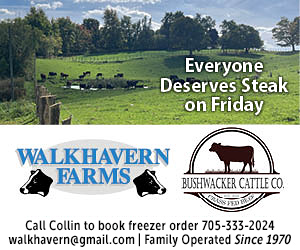Pretty River Valley—a.k.a. Three Stage—is a paradise for mountain bikers. Can it stay that way as usage grows?
by Molly Hurford // Photography by Jody Wilson

I was rolling over roots and rocks on a mini-descent in Three Stage mountain bike area, when I rounded a quick corner and came directly upon two hikers scrambling to get out of the way. Thankfully, mountain bike brakes are generally quite responsive and I was able to slow and extend a greeting.
The hikers explained they had strayed from the Bruce Trail and were now lost in the network of trails. I directed them on their way and continued down the trail.
Although I was able to avoid a collision, the close call underscored a situation that has become more common in the last three summers. The trails have become a popular destination and this has resulted in more pressure on the natural area, fueling calls for signage and more education.
If you ride mountain bikes locally, you’ve almost certainly ridden at Three Stage, located within Pretty River Valley Provincial Park—an 80-hectare local natural area home to rare flora and fauna, 500-million-year-old limestone, soaring cliffs, and yes, some of Ontario’s very best mountain bike singletrack.
For more than 25 years, mountain bikers have been instrumental in building new trails, maintaining those trails and having a heck of a lot of fun in the process. But as Three Stage has grown over the years, maintaining the integrity of the trails, preserving the ecosystem and ensuring fun and reasonably safe riding have become more complicated.
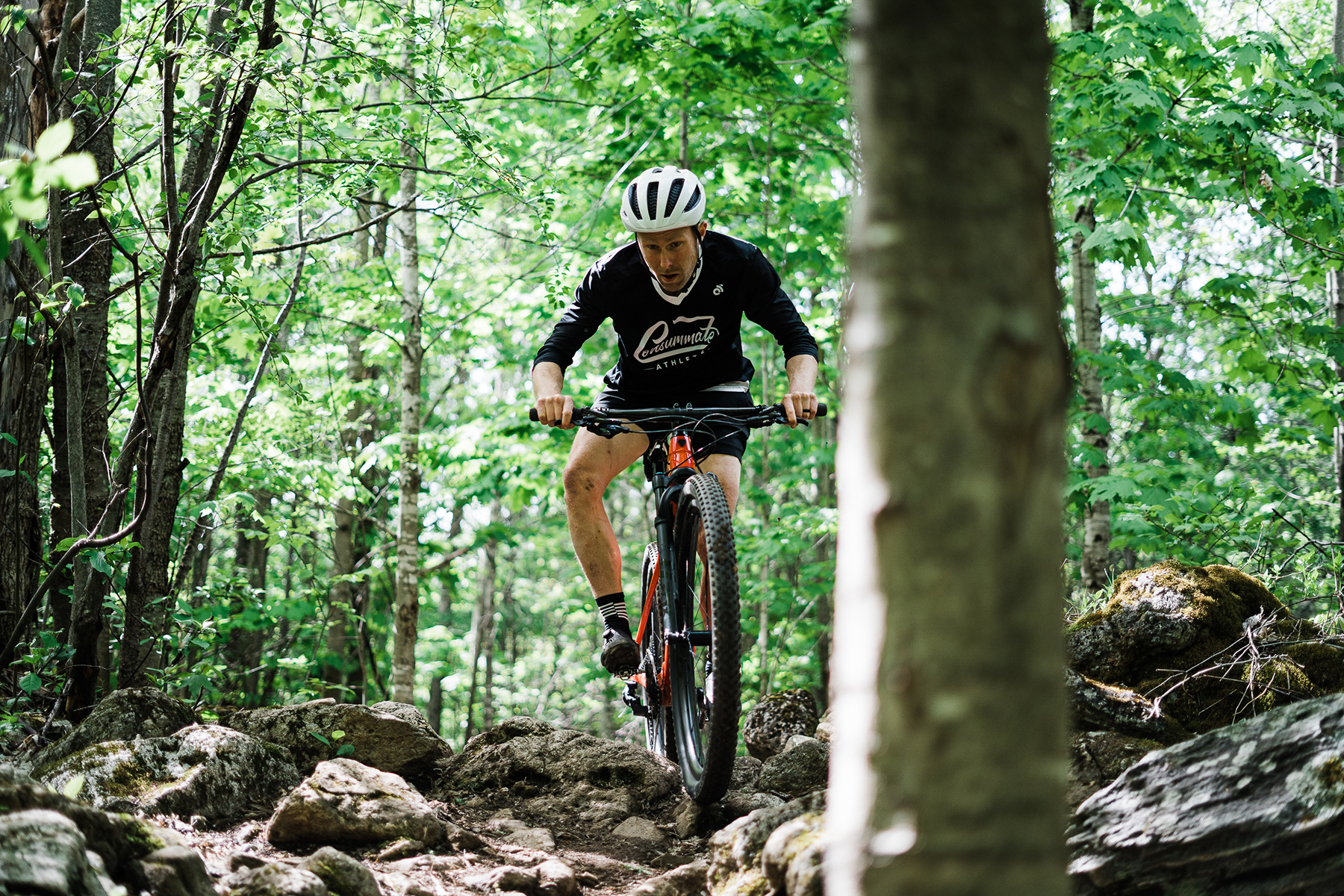
Three Stages of Greatness—A History
Pretty River Valley Provincial Park is built on the Escarpment and the original dirt bike climb that started the trail system had three “stages” to it, hence the Three Stage moniker. Now, it’s a developed trail system with routes and parking at the top and bottom, with plenty of trails crisscrossing the hill.
The Trailforks app—which claims “the world’s largest database of mountain bike trails”—reports a whopping 74 kilometres of trail at Three Stage, though that does include some gravel and paved road. Impressively, nearly 30,000 rides have been logged in the park on Trailforks alone over the years, an indication of just how popular the area has become.
Twenty-five years ago, mountain bikers in the area were just riding on gravel concession lines, parts of the Bruce Trail that were legal to ride and a few home-built trails that were shared with dirt bikes and trucks. But local riders, including Steve Varga—founder of the Friends of Three Stage—began to build trails in the provincial park. recalls. “It was just that simple.”
The trails embrace the natural style of the terrain—rooted and rocky, with plenty of steep climbs and descents. The riding isn’t easy: a third of the trails are rated as “black diamond” or difficult. Another 40 percent are rated blue, or intermediate, while the rest are beginner-friendly, gravel or double-track. And without Blue Mountain operating a downhill park, it’s one of the few spots where riders can descend the full height of the Escarpment. That’s what makes it appealing to mountain bikers from all over the province.
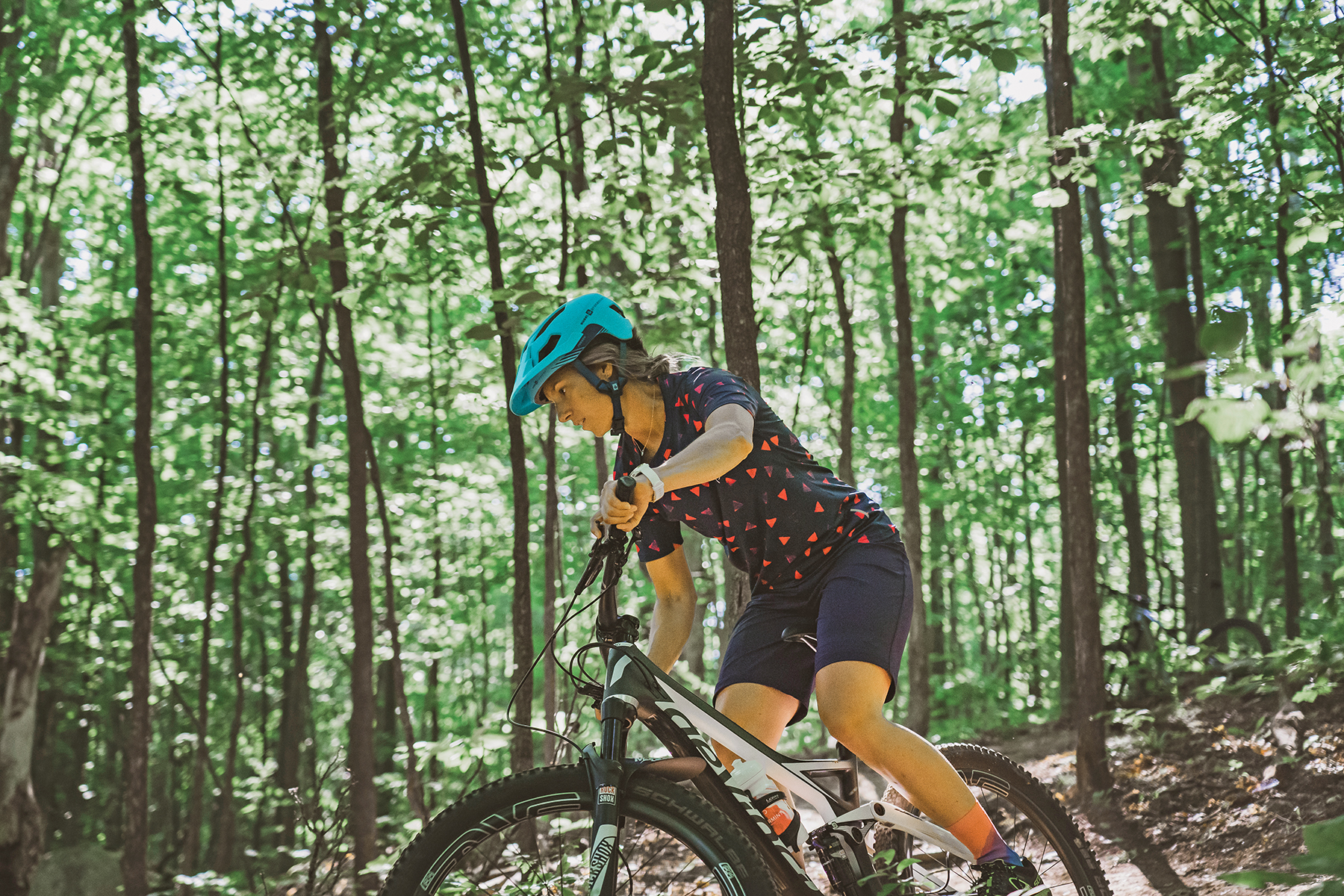
The trails embrace the natural style of the terrain—rooted and rocky, with plenty of steep climbs and descents.
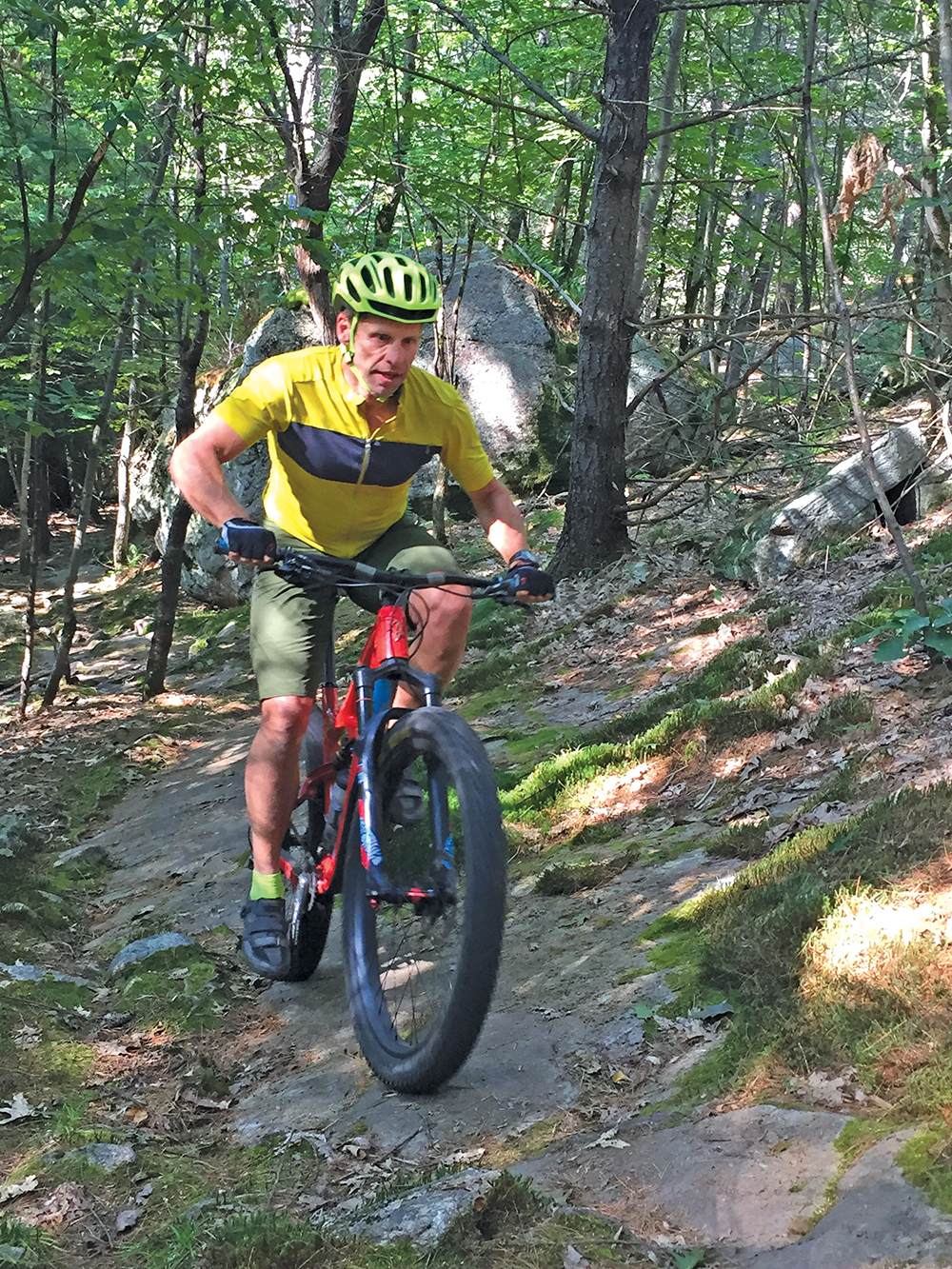

“Three Stage provides some of the best technical and enduro riding in Ontario,” says local enduro rider Tyler Pratt, referring to a discipline of mountain biking with a significant downhill component. “There are not many places with the sustained descending and climbing that Three Stage has to offer. Hopefully, the integrity of the technical riding in this area can be preserved for many years.”
“Three Stage is awesome. It’s technical and great riding, but beyond that, it’s just beautiful,” says Julie Moss-Kujala, president of Collingwood Off Road Cycling (CORC). “It’s so accessible. It’s part of my family’s life: When my husband turned 50, he wanted to ride 50 kilometres of single-track in there in one day. That was a tough haul and a long day on the trail, but the fact that we could make a route that ran 50 kilometres without repeating anything is amazing.”
And even when usage was at its peak last summer, Moss-Kujala notes that the amount of trails makes it feel more private and peaceful, even when the parking lots and roadsides are lined with cars.
But even if Three Stage doesn’t feel busy, it’s impossible to ignore that the COVID-19 pandemic got a lot of people outside and created a huge surge of interest for Ontario’s provincial parks, while also triggering a cycling boom. That, combined with the nearby closure of Blue Mountain’s downhill park, means more mountain bikes on the trails in Pretty River Valley Provincial Park. This is a good thing, but it does create some potential problems.
Amazing Trail —A Maze of Trails
As good as Three Stage is, it can be unwelcoming to some. The informal evolution of the trails has resulted in a network that is bewilderingly complex, clashing with some riders’ belief that a trail network should be easy to navigate. As one reviewer said on Singletracks.com, these trails “would be a terrible introduction to mountain biking for a beginner. The black diamond rating is accurate and the warnings below about bringing a GPS should not be underestimated.”
Other than markings for the Bruce Trail, there are no trail signs. Riders can find maps using apps such as Trailforks, Vargas’ map of choice for the most up-to-date information, but there isn’t one official map that will help you in the tight spider web of overlapping single-track. That means if you’re new to mountain biking and to navigation, you may get in with no problem—especially from the top parking lot—but finding your way out may be trickier than you expect. That said, the park itself is surrounded by gravel roads on all sides, so a worst-case scenario—unless you get injured—is a few miles of road riding to get back to your car.
As Three Stage draws more attention, there is also a growing call for some of the more “colourful” trail names in the Trailforks app to be replaced with more politically correct monikers, especially in popular, family-friendly mountain biking destinations. Many trail advocates believe that while there’s plenty of room for fun trail names, those names shouldn’t make people feel uncomfortable or unwelcome.
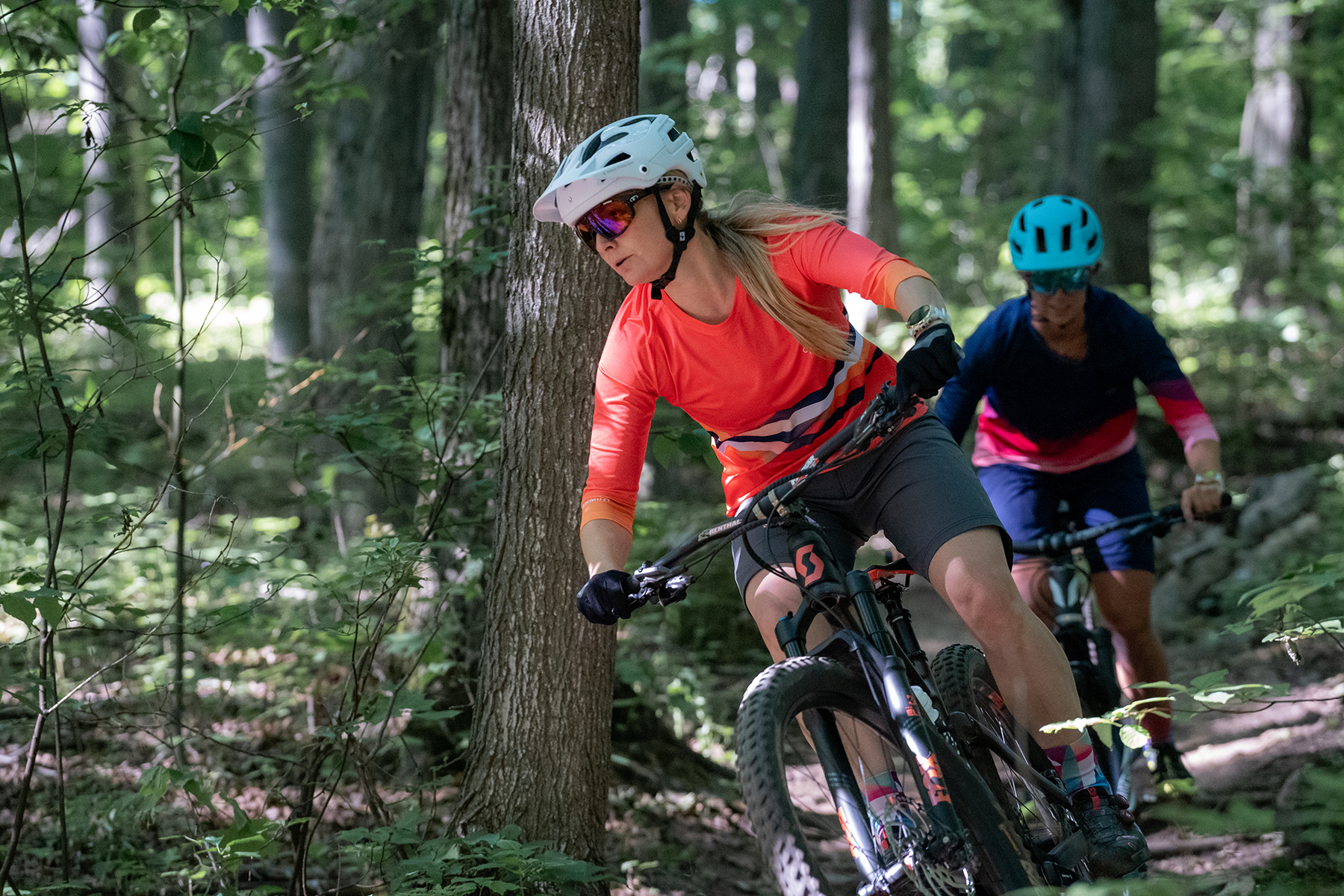
Wilder Than it Appears
Once riders do make their way into Three Stage’s spaghetti network of trails, another potential problem is its surprising remoteness. Although it seems close to civilization, most of Pretty River Valley Provincial Park is technically a remote wilderness area—defined in search and rescue terms as anywhere that would take more than an hour to get a person to the hospital or to “definitive care.”
Local mountain bike skills coach Peter Glassford says he generally won’t bring clients to Three Stage for skills sessions or guided rides until he’s confirmed that they’re capable riders.
“There are a lot of places in the park that are quite remote,” he says. “And the trails might seem mild at the top, but once you start descending, they can be extremely challenging for beginner riders—not to mention difficult to climb back up! It can be disappointing for new riders who are trying to learn basic skills.”
For example, if you park at the popular top parking lot along Second Line, you would have a 15 kilometre ride on the road to get back to the parking lot, and it would still include a lot of climbing. Riders might be better off walking their bikes all the way up the roughly 300-metre climb.
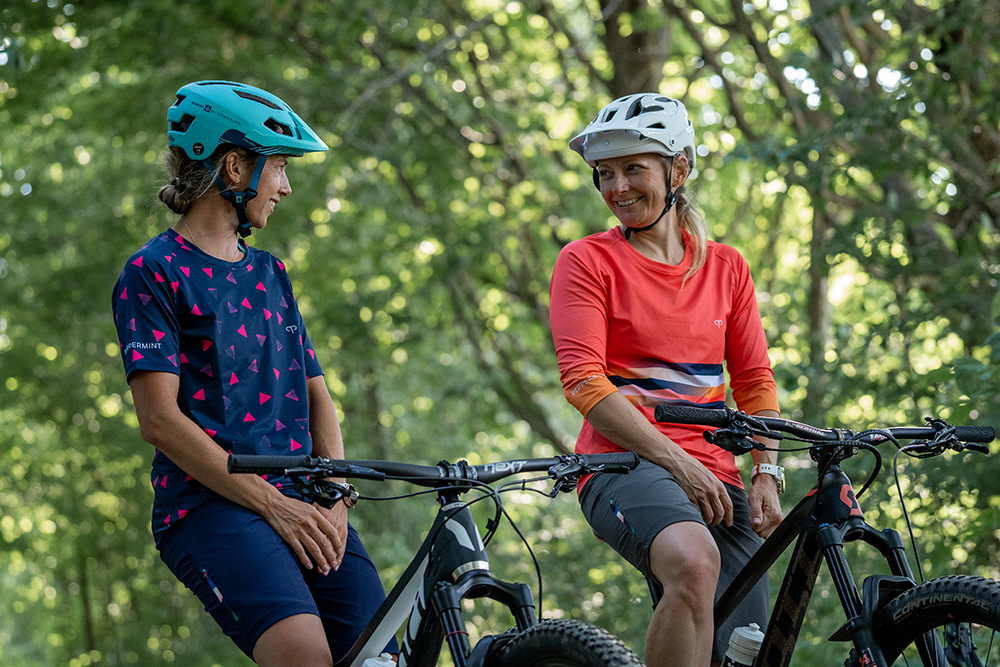
“It’s devastating to have people ripping out rocks and changing the trail,” says Moss-Kujala, the CORC president.
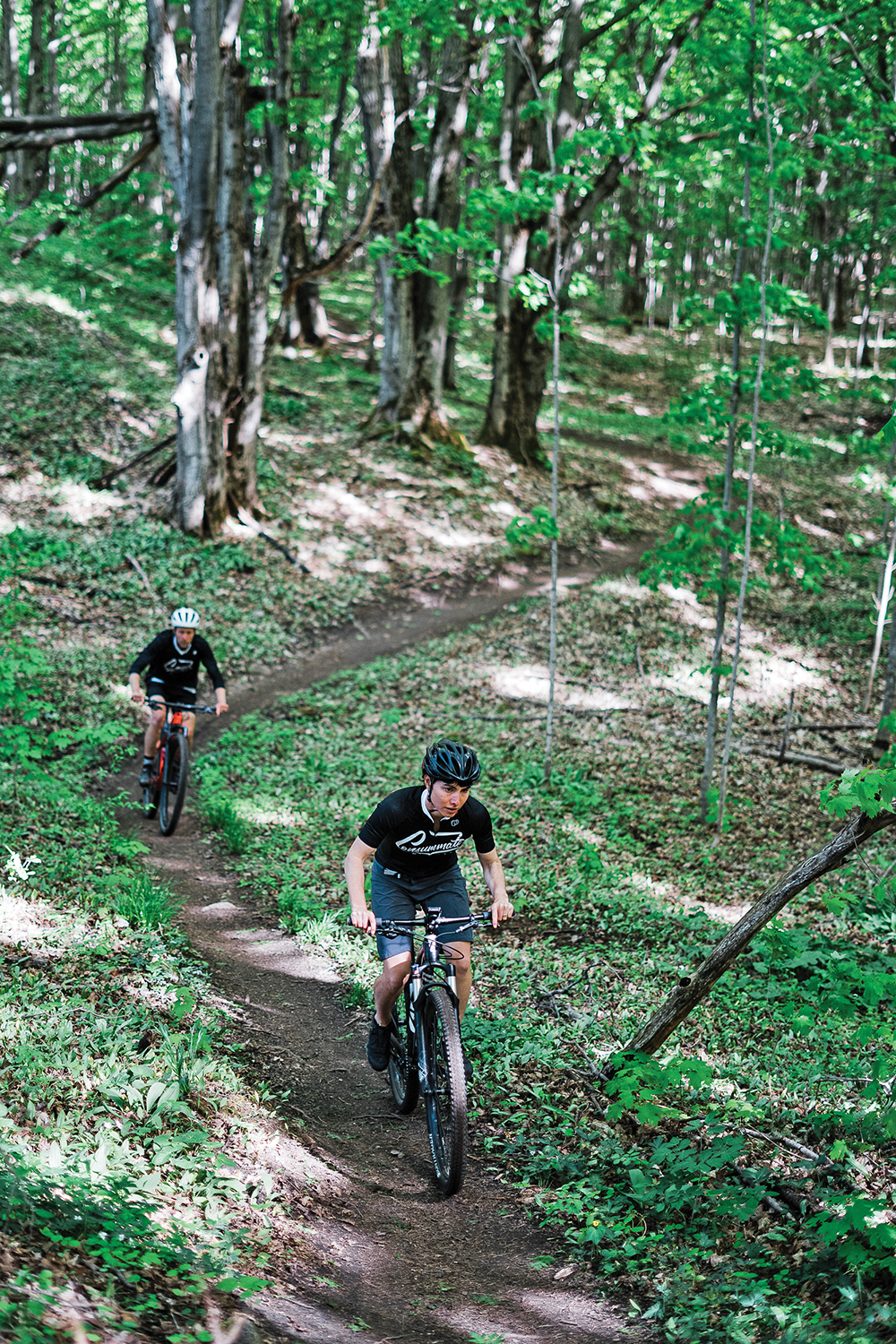
Trail Wear and Tear
With increased traffic has come issues of trail degradation—meaning riders remove big rocks and roots from the trail in the name of making the riding smoother.
However, while moving a rock may make for a smoother ride at first, those minor trail changes can lead to major issues with sliding—and take away from the technical nature of the trails that make them so magical.
“It’s devastating to have people ripping out rocks and changing the trail,” says Moss-Kujala, the CORC president. “That’s terraforming. You can’t go and take coral from a reef, and you shouldn’t pull rocks out of the trail. We could use more help with conservation, whether that means more education or patrolling.”
In practical riding terms, Pretty River also doesn’t drain very well. That means it takes longer for it to be rideable once the snow melts—it’s often still slushy in early May while sandier trails in Wasaga and Dufferin are bone dry. It also means that in the summer and fall, a single rainstorm can render it unrideable for two or three days. Most local riders know that the trails will be muddy long after the last snow melts, but if some cyclists have made a special drive to the trailhead without that information, they may be inclined to leave some muddy tracks behind. Fortunately, the clay base means that the trails are rarely wrecked from one mucky ride, but your bike drivetrain certainly might be.
Change is (Maybe) Gonna Come
Increased ridership has also brought occasional conflict with other users. It’s important to remember that Pretty River is not just a mountain biking destination, it’s a provincial park, designated by Ontario Parks as a “non-operating provincial park offering self-guided activities with no formal facilities or services.” This makes the regulations of the area interesting, and not without challenge.
There have been incidents of parking battles between residents living along Pretty River and trail users, and off-leash dogs behaving poorly on the trails.
“Most trail users are considerate. However, sometimes park staff have to address concerns raised by the public regarding multi-use trails and dogs off leash,” said an Ontario Parks spokesperson. “Ontario Parks staff also work closely with the local municipality to help address illegal parking along municipal roadways and trespassing on adjacent private property.”
Anecdotally, local riders have noticed a heavier park police presence in Pretty River this season. And if trail users can’t self-police or maintain trail integrity in the park, expect more oversight in coming years.
“As a result of the most recent Pretty River Valley Management Plan review, there are several discussions underway, including trail alignment reviews, trail maintenance protocols and parking options,” Ontario Parks said in a statement.
“Any management direction changes such as collection of fees or parking development will need to satisfy environmental assessments and park management planning requirements, which may include public consultation.”
It sounds like nothing will change immediately in the way the park is managed. In the meantime, a lot of the problems can be resolved with education and good trail etiquette (see the sidebar for specific riding tips).
“Three Stage is pristine,” says Moss-Kujala. “It’s such a special place for us. I think everybody feels that way. This area used to be a hidden gem, and now it’s much more popular. That’s a great thing and we want to share it—but we also want to make sure that we continue to be able to ride and enjoy the trails as they’re meant to be enjoyed. Mountain biking is a respectful culture. We’re in the forest for a reason: we love to be there.”
What Can You Do?
9 Tickets to Responsible Riding
There are lots of ways that individual riders can ensure that Three Stage stays open and rider-friendly for years to come.
Observe Good Trail Etiquette
Simply put, be respectful. Three Stage is a multi-use trail system, so be aware of other cyclists as well as hikers and runners. Stay on the trail at all times, keep dogs on a leash (and pick up after them) and of course, leave the trilliums alone.
Carry In, Carry Out
Pick up after your dog and yourself. If you spot trash on the trail during your ride, pause and grab it. And remember, this provincial park has no facilities, so…go before you go.
Rainy Day? Stay Away
Ontario Parks is implementing a signage program at Pretty River Valley that will indicate the current conditions of the trails to avoid damage, but generally speaking, skip rainy day rides on Three Stage. You probably won’t enjoy the ride anyway. “You’ll slide around like you’re on a skating rink,” says Friends of Three Stage founder Steve Varga.
Start at the Top
This is important if you’re a beginner. The easiest trails are here, and if you notice you’re starting to ride sharply downhill, turn around or take a flatter-looking side trail! But don’t panic if you hit a technical section. Most of the trails have a few features, but generally are fairly easy to navigate. Use Trailforks (trailforks.com) to find your way and see difficulty ratings.
Avoid the Bruce Trail
For the sake of peace and harmony, it’s best to leave the Bruce Trail to hikers and have bikers stick to the bike trails. (The mountain bike trails are also a better riding experience.)
Join CORC
Joining the Collingwood Off Road Cycling Club (CORC) is a good way to learn more about where to ride, meet other riders, help develop and maintain local trails and give the mountain biking community a voice in dealings with landowners and government (collingwoodoffroadcycling.com).
Pitch in with Maintenance
Three Stage is what it is because of local trail builders and mountain bike devotees. The trails aren’t maintained by the park, they’re maintained by avid mountain bikers. “On every ride, pick up one or two branches that are down on the trail,” suggests Varga. “If everybody did that, it would be a pristine place. The trails are generally in great condition, and that’s thanks to volunteers. Even if there’s a big windstorm, within days, people are out there picking up a ton of branches.”
Adopt a Trail
If you want to delve deeper into trail maintenance, consider joining the Friends of Three Stage and adopting your own trail. “When you (adopt) a trail, you have a much greater feeling of ownership,” says Varga. “And honestly, working on the trails is fun. It’s like gardening!” At this point, about 35 people have adopted trails. Sign up through the “Adopt a Trail” link on the CORC website (collingwoodoffroadcycling.com).
Restrain Your Inner Landscape Architect
Even if you adopt a trail, your job is only to remove sticks that have fallen onto the trail and push back leaves and branches that may hit riders coming through—not to remove rocks or roots that are dug into the dirt. And definitely don’t task yourself with building new trails or adding new sidelines around obstacles.











